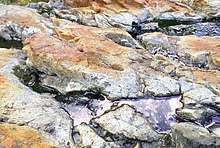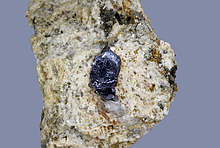Home PageAbout MindatThe Mindat ManualHistory of MindatCopyright StatusWho We AreContact UsAdvertise on Mindat
Donate to MindatCorporate SponsorshipSponsor a PageSponsored PagesMindat AdvertisersAdvertise on Mindat
Learning CenterWhat is a mineral?The most common minerals on earthInformation for EducatorsMindat ArticlesThe ElementsThe Rock H. Currier Digital LibraryGeologic Time
Minerals by PropertiesMinerals by ChemistryAdvanced Locality SearchRandom MineralRandom LocalitySearch by minIDLocalities Near MeSearch ArticlesSearch GlossaryMore Search Options
The Mindat ManualAdd a New PhotoRate PhotosLocality Edit ReportCoordinate Completion ReportAdd Glossary Item
Mining CompaniesStatisticsUsersMineral MuseumsClubs & OrganizationsMineral Shows & EventsThe Mindat DirectoryDevice SettingsThe Mineral Quiz
Photo SearchPhoto GalleriesSearch by ColorNew Photos TodayNew Photos YesterdayMembers' Photo GalleriesPast Photo of the Day GalleryPhotography
╳Discussions
💬 Home🔎 Search📅 LatestGroups
EducationOpen discussion area.Fakes & FraudsOpen discussion area.Field CollectingOpen discussion area.FossilsOpen discussion area.Gems and GemologyOpen discussion area.GeneralOpen discussion area.How to ContributeOpen discussion area.Identity HelpOpen discussion area.Improving Mindat.orgOpen discussion area.LocalitiesOpen discussion area.Lost and Stolen SpecimensOpen discussion area.MarketplaceOpen discussion area.MeteoritesOpen discussion area.Mindat ProductsOpen discussion area.Mineral ExchangesOpen discussion area.Mineral PhotographyOpen discussion area.Mineral ShowsOpen discussion area.Mineralogical ClassificationOpen discussion area.Mineralogy CourseOpen discussion area.MineralsOpen discussion area.Minerals and MuseumsOpen discussion area.PhotosOpen discussion area.Techniques for CollectorsOpen discussion area.The Rock H. Currier Digital LibraryOpen discussion area.UV MineralsOpen discussion area.Recent Images in Discussions
Identity Helpif you know Elmwood Tennessee or hydrocarbons, pls review
15th Nov 2013 22:30 UTCTony Peterson Expert
http://www.mindat.org/photo-571787.html
which is a closeup of a routine Elmwood fluorite/sphalerite/dolomite specimen. It has numerous globules and patches of a tarry hydrocarbon on one side, not rare of course, but a couple of these seem to have sprouted flexible whiskers of either carbon or a dark, solid hydrocarbon. Comments, please!!!
Tony

15th Nov 2013 23:44 UTCDan Costian
I've never seen such shape of solid carbonaceous inclusions like bitumen or asphalt (aka anthraxolite); they look different.
16th Nov 2013 00:33 UTCTony Peterson Expert
tony
16th Nov 2013 00:51 UTCReiner Mielke Expert
which makes me think that what you have is "lint" that has gotten stick to the tar. In other words some sort of synthetic fiber.
16th Nov 2013 03:42 UTCTony Peterson Expert
16th Nov 2013 10:59 UTCReiner Mielke Expert

16th Nov 2013 14:34 UTCDavid Baldwin
Tony, Great photo by the way. Deserves to be a POTD!

16th Nov 2013 16:19 UTCDan R. Lynch
16th Nov 2013 16:25 UTCDavid Von Bargen Manager
If you look at the grey material, it does appear that they are very uniform in width - between fibers and along fibers. They also appear to have a similar cross section (sort of looks like they are thick in the middle and thin down to some fairly thin edges). If the cross sections are all alike and not a rectangular or square cross section, they probably are not natural.

16th Nov 2013 16:54 UTCDan R. Lynch
One last thing I noticed: the lowest fiber in the image appears to be laying across the tar blob, rather than extending out of it. You can see both ends of the fiber, to the left and right of the tar, as if it is stuck to the tar at a midpoint along the fiber rather than at one of its ends.
16th Nov 2013 17:14 UTCTony Peterson Expert
I am, however, pretty confident that the hydrocarbon patches are natural.
tdp
19th Nov 2013 03:33 UTCTony Peterson Expert
http://www.mindat.org/photo-572543.html
I have examined these closely in a stereo microscope and in fact they are largely transparent, with a blue-grey coloration. I am no closer to understanding their origin.
Tony

19th Nov 2013 07:03 UTCD Mike Reinke
19th Nov 2013 15:05 UTCVincent Rigatti
19th Nov 2013 17:31 UTCRob Woodside 🌟 Manager
19th Nov 2013 17:41 UTCMaggie Wilson Expert
http://www.minersoc.org/pages/Archive-MM/Volume_57/57-387-231.pdf
In the lead-zinc deposits of the Rhodope Mountains, Bulgaria, however, unusual elongated straight, as well as crooked and irregular needle-like galena crystal formations and whiskers also occur.

23rd Nov 2013 17:44 UTCDoug Daniels

24th Nov 2013 16:05 UTCTim Jokela Jr




Mindat.org is an outreach project of the Hudson Institute of Mineralogy, a 501(c)(3) not-for-profit organization.
Copyright © mindat.org and the Hudson Institute of Mineralogy 1993-2024, except where stated. Most political location boundaries are © OpenStreetMap contributors. Mindat.org relies on the contributions of thousands of members and supporters. Founded in 2000 by Jolyon Ralph.
Privacy Policy - Terms & Conditions - Contact Us / DMCA issues - Report a bug/vulnerability Current server date and time: April 20, 2024 13:23:31
Copyright © mindat.org and the Hudson Institute of Mineralogy 1993-2024, except where stated. Most political location boundaries are © OpenStreetMap contributors. Mindat.org relies on the contributions of thousands of members and supporters. Founded in 2000 by Jolyon Ralph.
Privacy Policy - Terms & Conditions - Contact Us / DMCA issues - Report a bug/vulnerability Current server date and time: April 20, 2024 13:23:31












